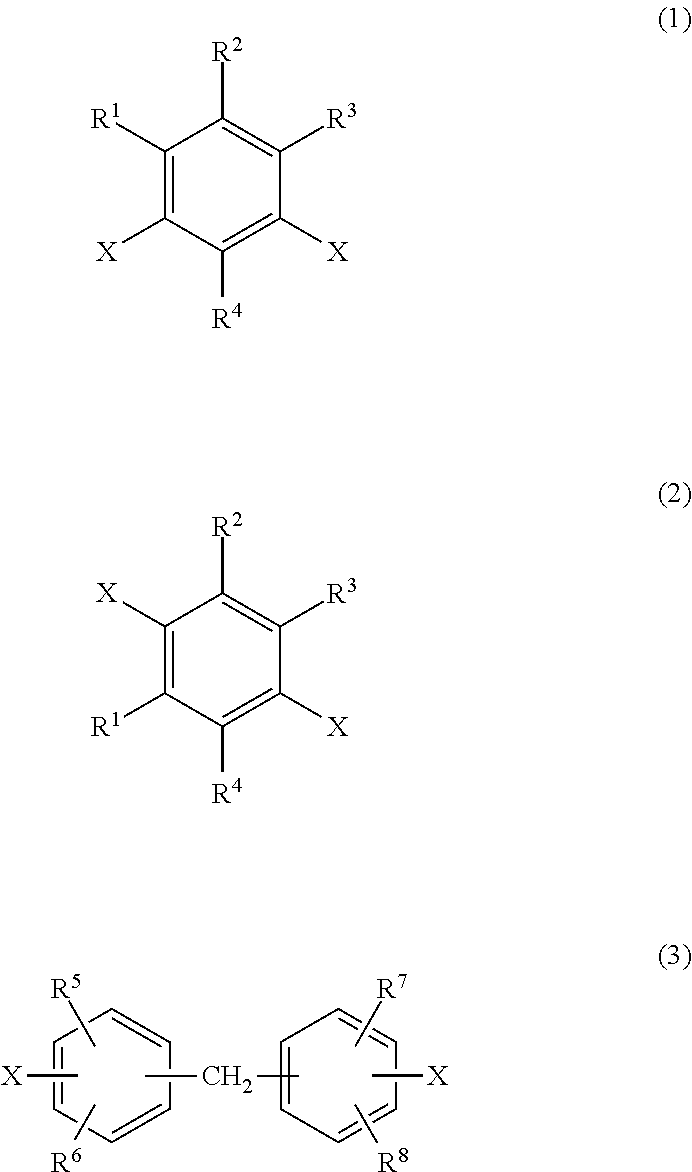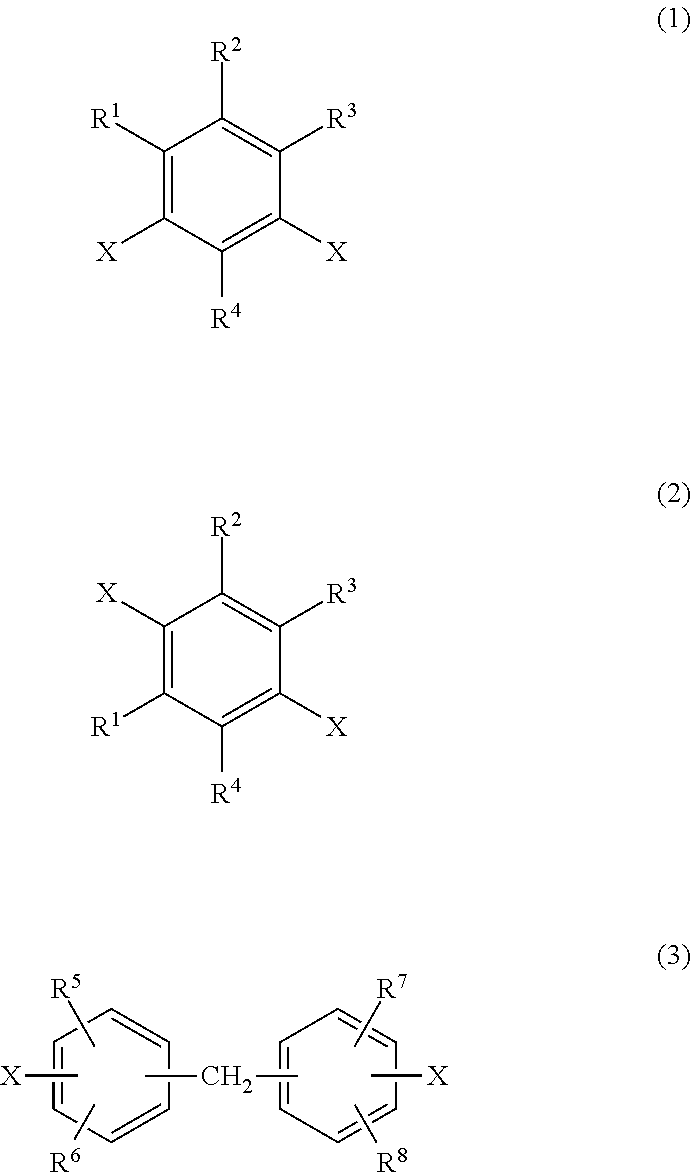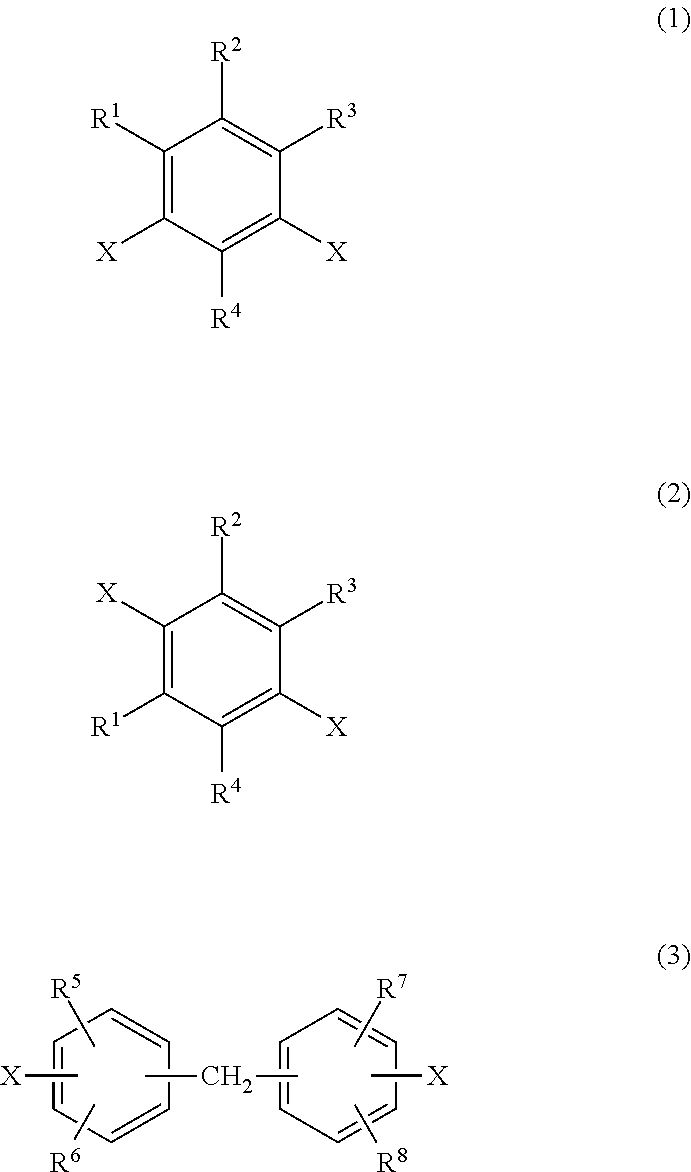Transparent polyimide copolymer, polyimide resin composition and molded article, and production method of said copolymer
a technology of transparent polyimide and copolymer, which is applied in the direction of coatings, etc., can solve the problems that the balance of demand characteristics cannot be eliminated by one of them, and the reduction of thermal decomposition temperature and heating yellowing cannot be avoided, and achieves excellent utility, high mechanical strength and thermal yellowing resistance, and solvent solubility. , the effect of satisfying the demand characteristics
- Summary
- Abstract
- Description
- Claims
- Application Information
AI Technical Summary
Benefits of technology
Problems solved by technology
Method used
Image
Examples
example 1
[0089]To a 500-mL separable four-necked flask equipped with a stainless steel anchor stirrer, a nitrogen-introducing tube and a Dean-Stark trap, 56.11 g (0.18 mol) of 4,4′-oxydiphthalic anhydride (ODPA), 32.09 g (0.18 mol) of DETDA, 326.87 g of γ-butyrolactone (GBL), 2.85 g of pyridine and 33 g of toluene were poured, and the atmosphere in the reaction mixture was replaced with nitrogen. The reaction mixture was stirred for 30 minutes at 80° C. under nitrogen gas flow to dissolve ODPA, and the resultant was then heated to 180° C. and stirred under heating for 6 hours. Water generated by the reaction was removed from the reaction mixture as an azeotropic mixture with toluene and pyridine. After the completion of the reaction, the reaction mixture was cooled to room temperature to obtain a polyimide solution having a concentration of 20% by mass. The thus obtained polyimide copolymer had a structure represented by the following Formula (22):
[0090]
[0091](wherein, one of R1 to R3 is a m...
example 2
[0092]To the same apparatus as used in Example 1, 46.80 g (0.15 mol) of ODPA, 38.16 g (0.15 mol) of 4,4′-diamino-3,3′,5,5′-tetramethyldiphenylmethane, 147.67 g of GBL, 2.39 g of pyridine and 50 g of toluene were poured, and the atmosphere in the reaction mixture was replaced with nitrogen. The reaction mixture was stirred for 30 minutes at 80° C. under nitrogen gas flow to dissolve ODPA, and the resultant was then heated to 180° C. and stirred under heating for 7 hours. Water generated by the reaction was removed from the reaction mixture as an azeotropic mixture with toluene and pyridine. After the completion of the reaction, 100 g of GBL was added when the reaction mixture was cooled to 120° C., thereby obtaining a polyimide solution having a concentration of 25% by mass. The thus obtained polyimide copolymer had a structure represented by the following Formula (23):
[0093]
example 3
[0094]To the same apparatus as used in Example 1, 44.70 g (0.1 mol) of 2,2-bis(3,4-dicarboxyphenyl)hexafluoropropane dianhydride (6FDA), 17.83 g (0.1 mol) of DETDA, 128.44 g of GBL, 3.16 g of pyridine and 50 g of toluene were poured, and the atmosphere in the reaction mixture was replaced with nitrogen. The reaction mixture was stirred for 30 minutes at 80° C. under nitrogen gas flow to dissolve 6FDA, and the resultant was then heated to 180° C. and stirred under heating for 6 hours. Water generated by the reaction was removed from the reaction mixture as an azeotropic mixture with toluene and pyridine. After the completion of the reaction, 36.70 g of GBL was added when the reaction mixture was cooled to 120° C., thereby obtaining a polyimide solution having a concentration of 25% by mass. The thus obtained polyimide copolymer had a structure represented by the following Formula (24):
[0095]
[0096](wherein, one of R1 to R3 is a methyl group and the other two are ethyl groups).
PUM
| Property | Measurement | Unit |
|---|---|---|
| light transmittance | aaaaa | aaaaa |
| temperature | aaaaa | aaaaa |
| temperature | aaaaa | aaaaa |
Abstract
Description
Claims
Application Information
 Login to View More
Login to View More - R&D
- Intellectual Property
- Life Sciences
- Materials
- Tech Scout
- Unparalleled Data Quality
- Higher Quality Content
- 60% Fewer Hallucinations
Browse by: Latest US Patents, China's latest patents, Technical Efficacy Thesaurus, Application Domain, Technology Topic, Popular Technical Reports.
© 2025 PatSnap. All rights reserved.Legal|Privacy policy|Modern Slavery Act Transparency Statement|Sitemap|About US| Contact US: help@patsnap.com



